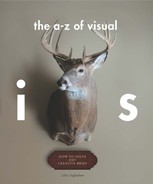I
Icons
The word icon was first used to describe a holy picture worshipped by believers. It has now come to mean someone or something that is universally and uncritically admired with an equivalent level of adoration.
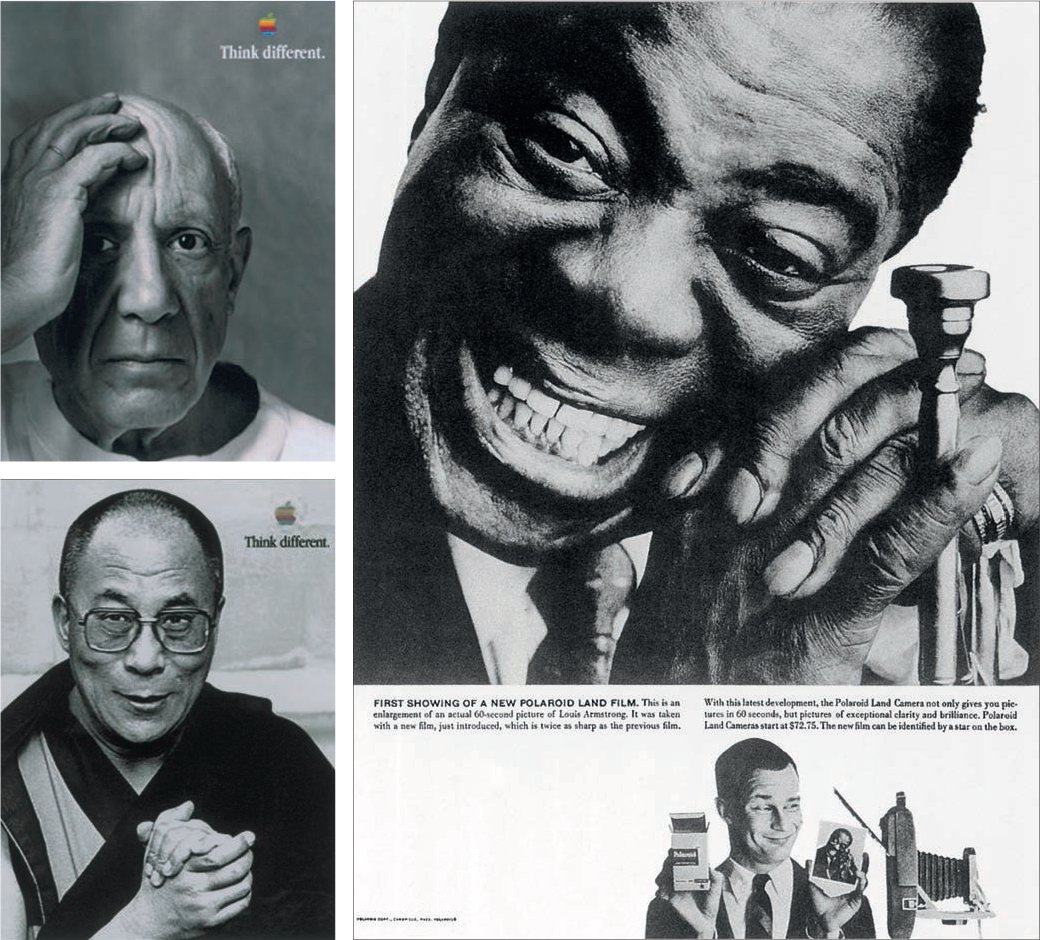
Iconic ads
In the 1999 ads (opposite far left) Apple computers use the iconic status of Picasso and the Dalai Lama to send the message that they too are visionary thinkers. Louis Armstrong, the personification of creative joy, features in the 1958 ad for Polaroid cameras (opposite right).
Iconic status has been achieved only by an exclusive few individuals. While the fame of the vast majority of those known as celebrities wilts swiftly, that of true icons continues to grow even long after they have died. Icons are immortal and, no matter how much we are told about their imperfections, their status is unchanged in our minds. Icons are more than national treasures; they are world treasures.
The power of their status can been seen in the fact that, like deities, many icons are known throughout the world by a single name: Einstein, Marilyn, Ali, Pelé, Elvis, Gandhi, Che and Picasso. They have been described as the saints of our secular age and Marilyn is even known a ‘goddess’.
Instant icons
The best-known photographs of icons are simple, pareddown images, often in black and white. Examples are Che wearing a beret with a revolutionary star, Einstein poking his tongue out and Audrey Hepburn in close-up holding a long cigarette holder. This visual language inspired the poster for the film Trainspotting, where instantly iconic images of its young stars were created in a series of animated black-and-white photographs of the characters ‘cut out’ on white backgrounds. The images were described by the film’s director as imbuing the actors with a ‘defiant swagger’. The Trainspotting poster is now Blu-Tacked to the bedroom walls of many teenagers alongside photographs of the icons than inspired it.
French photographers Pierre et Gilles are inspired by religious icons. They use the way they are composed, and their poses and bright gaudy colours, for portraits of pop and film stars. See Places of worship.
Design icons
Certain designs such as the London Underground map and the ‘I ❤ New York’ logo have been promoted to iconic status. Like human icons, these have gained a special place in the public’s heart.
The icon business
The powerful effect that recognizing the few people deemed truly iconic has on the public has led to their images being highly valuable in advertising. To prevent a free-for-all, international laws have been introduced that prohibit commercial use of an icon’s photograph without permission. These laws have granted what are called image rights to icons – meaning they have been given the right to commercially market and sell their image as only they think fit.
Icons are now fiercely protected. This is the responsibility of their management when they are alive and of their descendants when they die. Any potential use of an image in advertising is carefully vetted to ensure the icon’s status is not diluted and devalued by association with an inferior product or service. Ownership of an icon’s image rights can now be bought and sold like any other commodity. Muhammad Ali’s were recently auctioned for millions of dollars.

Lorenzo Agius, Trainspotting, movie poster, 1996
Photographer Lorenzo Agius shot the young, unknown Trainspotting actors in the dynamic, high-impact, black and white visual style seen in many famous images of icons.
Iconic vs celebrity endorsement
Celebrities can be mistaken for icons, but no matter how carefully they nurture their public persona to create a good image they lack the latter’s invulnerability. Icons are totally trusted while celebrities can prove untrustworthy. This was seen in the midst of a campaign created for the razor company Gillette in which golfer Tiger Woods and footballer Thierry Henry endorsed its products in advertisements. Both had been chosen for their clean-cut wholesomeness but Woods was a serial wife-cheater and Henry was accused of handling the ball. Their reputations are forever damaged.
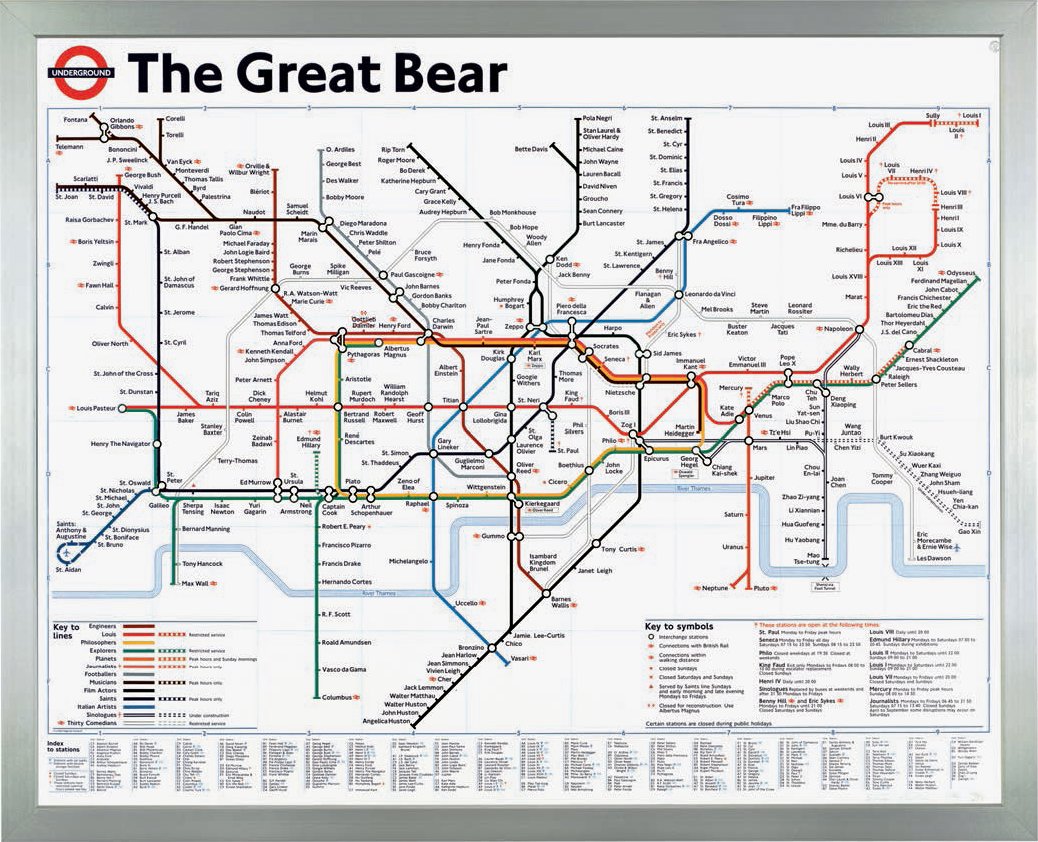
Simon Patterson, The Great Bear, 1992
Harry Beck’s London Underground map has become a much-loved design icon and symbol of London since its creation in the 1930s – see Science, Symbols. Like the ‘I ❤ New York’ rebus it is printed on T-shirts, posters, mugs, mouse mats and numerous other types of merchandise and has inspired the design of maps for transport systems throughout the world. Its coloured arteries, sequences of stations and intersections are deeply imprinted in the minds of millions of users. Artist Patterson’s redesign replaces the station names with those of comedians, footballers, actors, scientists, saints, philosophers, politicians, explorers and planets arranged along each different track, stations wittily fit or jar with the names with which they have been replaced. Patterson’s use of the iconic map allows viewers to take wonderful new journeys in their imaginations travelling back and forth through history, culture and space.

Tevez as Che, magazine cover
Che symbolizes youthful rebellion, a dream of progress and revolution, in this award-winning magazine cover Argentinian footballer Carlos Tevez becomes the icon – communicating that the maverick striker has been signed in the hope of bringing glory to a football club stuck in the doldrums.

Audrey Hepburn, LG phones ad
Audrey Hepburn’s image as Holly Golightly confers style on a brand of mobile phones in this ad seen in the Chinese metro.
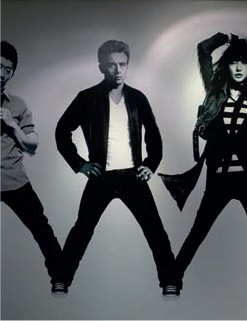
James Dean Converse ad
Iconic film star James Dean – the embodiment of youthful rebellion – perfectly fills the shoes of someone needed to advertise iconic Converse footwear.
![]()
DIY
Find a connection between your project or brief and an icon, then develop and maximize the interrelationship. See Music, Movies.
![]()
Brainjack
Icons are mesmerizing. They never date. Pictures of icons are speedily ‘read’ by viewers as fame and renown are compellingly compressed in their images. Icons are highly effective in communication to mass audiences as they instantly symbolize values that are profoundly understood by every viewer. For example, Audrey Hepburn = stylish beauty, Che and James Dean = youthful rebellion, Picasso = visionary artistic genius and Marilyn = glamour. See Symbols.
Icons are not totally untouchable. The portrayal of an icon or iconic image in an unexpected manner is striking. It provokes a powerful response as an image with a precious status that has been tampered with.
An illusion is something that deceives the eye and thereby tricks the mind. Illusions turn twist, spin and throb in the mind of the viewer.
It is said that the greatest thing a designer can do is ‘buy’ the time of the consumer. As illusions make viewers double-take, perhaps they dwell on them for double the time that would be given to a conventional image – in which case illusions are twice as potent as other means of communicating.
Illusions are compelling; they exploit the space between the eye and the brain. The brain tries to insist that the visual clues it has been given must be believed, and for the viewer this creates the exciting experience of feeling they can’t believe their eyes – which they normally trust entirely.
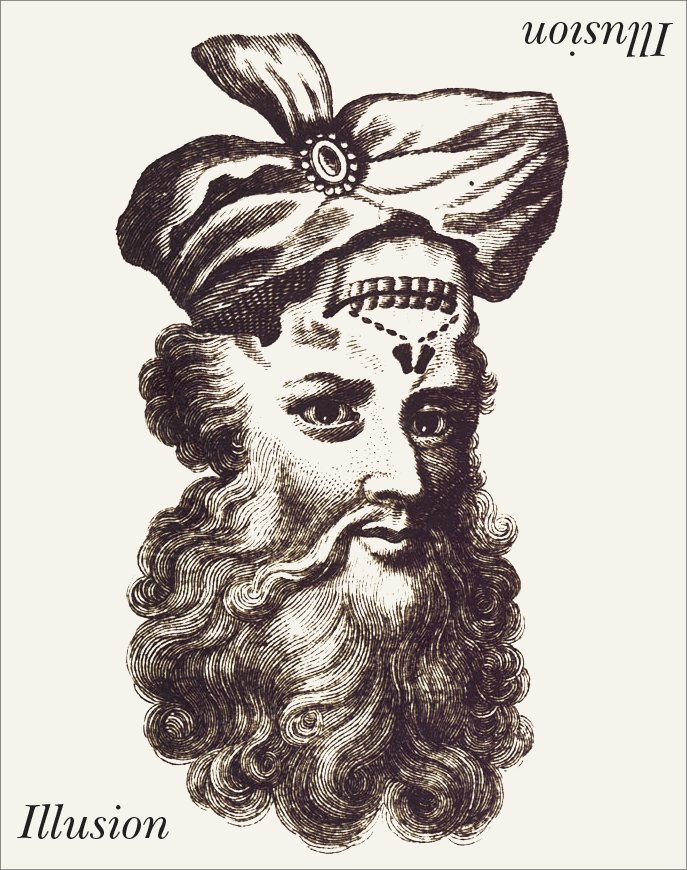
Double Take
A visual surprise awaits when this page is turned upside down. This two-faced character was drawn by an Italian artist called Giuseppe around three hundred years ago as a ‘memento mori’ – a reminder to viewers that we are all mortal.
‘When you see something that is literally amazing, you can’t believe your eyes, it’s magical. That work inspires me.’
Ross Cooper, multidisciplinary designer

Bridget Riley, Blaze 4, 1963
British artist Bridget Riley’s 1963 painting Blaze 4 creates optical sensations so intense that it can be disorientating to view.

Shigeo Fukuda, Legs Dancing
Japanese artist, designer and master visual illusionist Shigeo Fukuda created this poster in which men and women’s legs dance together in the mind. See Shadows.
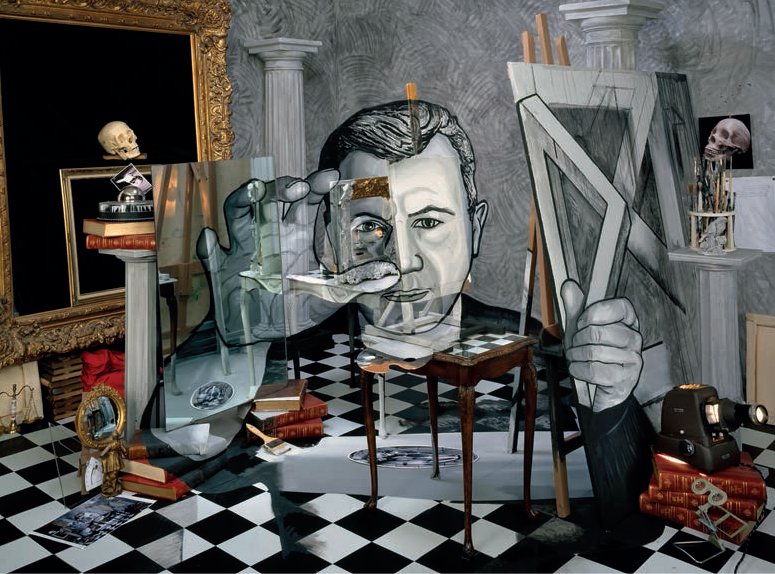
Calum Colvin, Natural Magick
Scottish artist Calum Colvin’s masterful images combine construction, painting and photography. He paints onto the surfaces of carefully assembled groups of objects to create the illusion of a two-dimensional drawing only visible at a single viewpoint – from which he then photographs. The pictures appear simultaneously both flat and three-dimensional. See www.calumcolvin.com
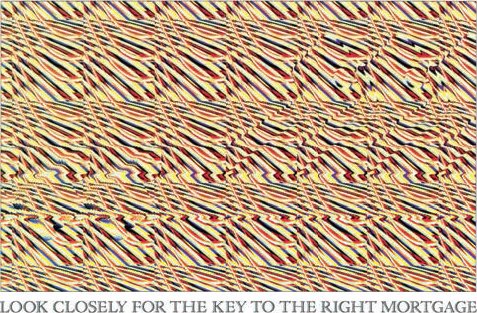
Magic Eye Key ad
Ad for Lloyds bank created in 1995 at the height of the craze for these ‘magic eye’ pictures. To view the illusion you have to stare at the image and try to look ‘past’ its surface.
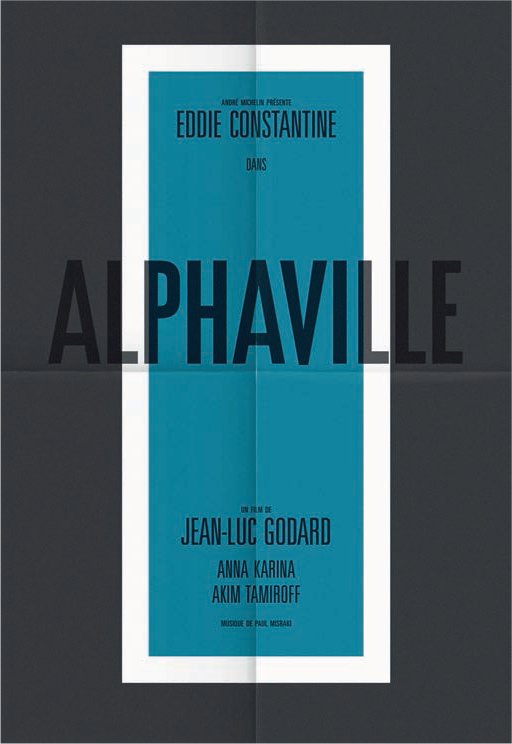
Alphaville poster
David Pearson created this contemporary poster for the 1965 French movie Alphaville. The design gives the illusion that the poster has been carefully folded and treasured. See www.davidpearsondesign.com
![]()
DIY
Be inspired by illusions. Seek ones that can deliver your message and bewitch your viewer.
![]()
Brainjack
Creating illusions offers magic for viewers’ eyes and stimulus for their minds. They can be entranced by a visual hypnotism.
Irony
An ironic use of images and words conveys a meaning that is the opposite to what is actually stated. One thing is said but the opposite is implied. To launch a new season’s collection the Italian fashion company Diesel created a memorably ironic campaign: How To Do Fashion Photography. Instead of sending out the usual brochure showing beautiful models wearing outfits in beautiful locations they produced what at first glance looked like a manual showing how to take hip fashion photographs. In fact the opposite is the case.

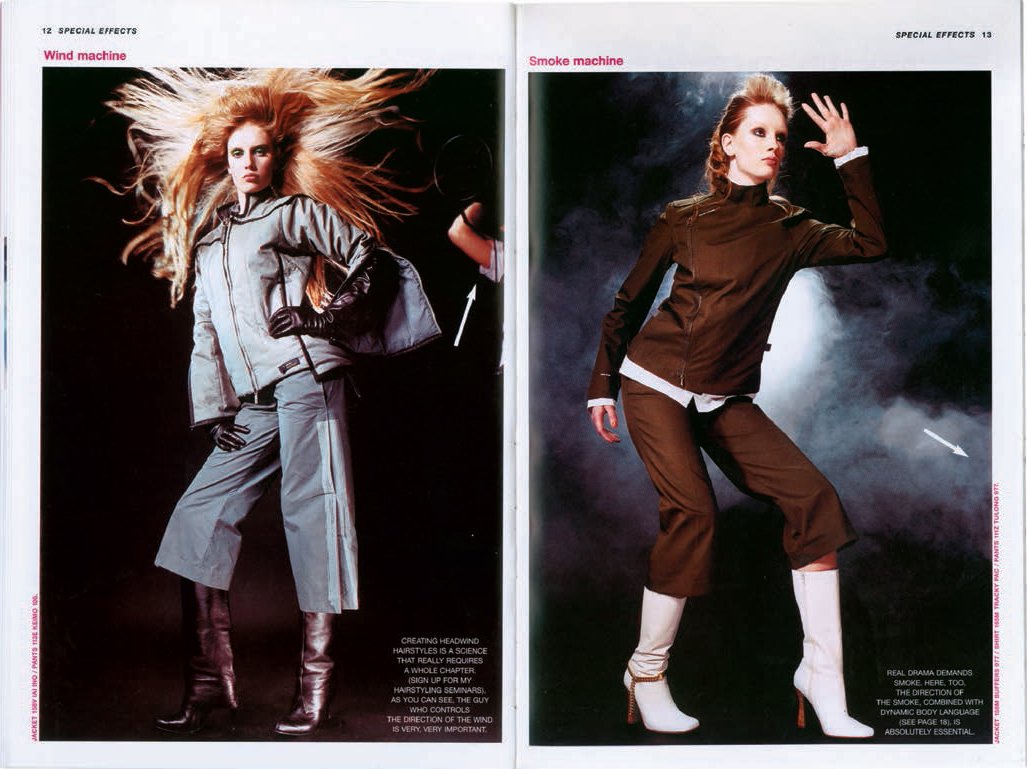
How to be ironic
Using the layout, copywriting style and typography of ‘how to’ manuals the creators of the Diesel brochure offered step-by-step diagrams and top tips on creating fashion photographs. The photography, poses, styling, props – and tips – are appalling. With deadpan seriousness no cliché is missed, from recommending the flagrant use of wind and smoke machines to smearing Vaseline on the camera lens to create extra-moody pictures. The first impression is that the message being communicated to a young and fashionable audience couldn’t be more wrong – but this is turned on its head with the realization that the dreadful delivery is deliberate. The effect is laugh-out-loud funny. The ironic, tongue-in-cheek delivery communicates that Diesel is smart, witty and knowing. See So bad it’s good.

Face value
When a group of London art students wanted to attract key people from the creative industries to their graduation exhibition they came up with the slogan Same Shit Different Year. At face value the message is ‘You’ve seen all this stuff before so you needn’t bother to turn up’. The underlying message is that the show will be fresh and different. The sheer bravado and audacity of this ironic invitation demands the viewer’s attendance.
![]()
DIY
Create work in which surface meaning and what lies beneath are very different.
![]()
Brainjack
‘Irony purports to take seriously what it does not.’
Arthur Koestler, writer
Irony turns a message on its head by reversing its appearance. The acrobatics of this flip take place in the viewer’s head. This performance in the mind can be highly entertaining.
